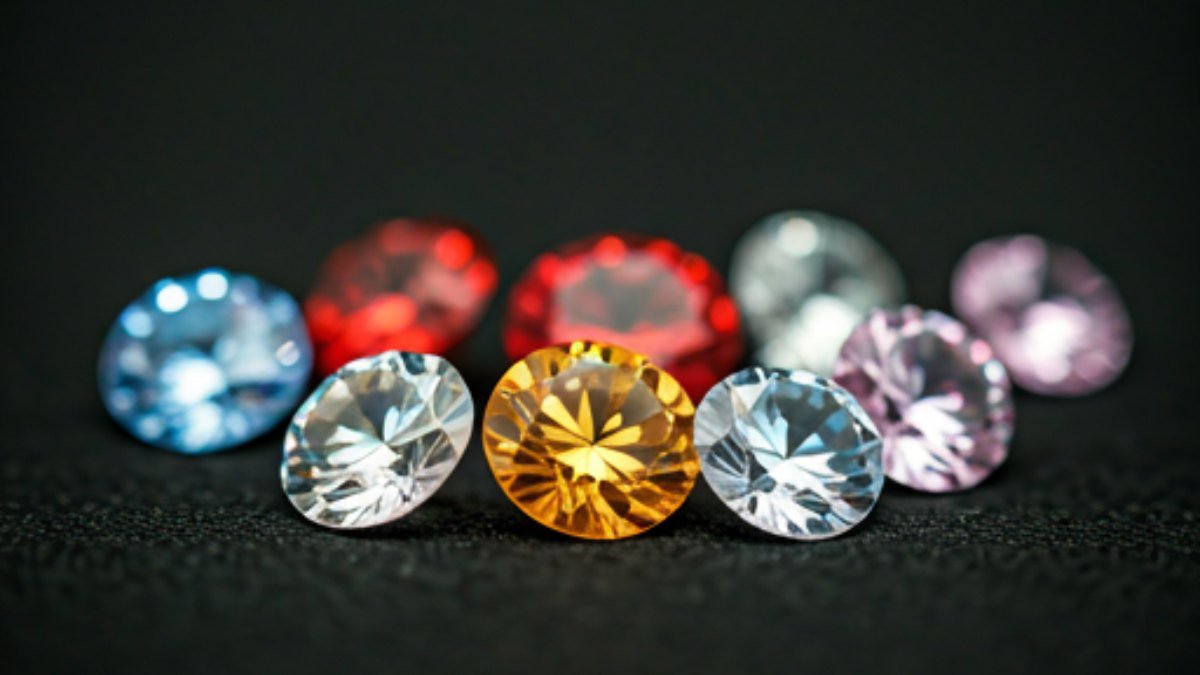
The fact is, we can’t, none of us. At least not by eye, and not even when using a 10x loupe. But that doesn’t mean we shouldn’t be vigilant, especially if we truly prefer our diamonds to be completely natural. But this is where the problems really start. Because synthetic diamonds are completely natural in composition. This article will help you on how to Identify Synthetic Diamonds.
First, What Exactly Are Synthetic Diamonds?

Before we dive into how to spot them, let’s quickly clarify what synthetic diamonds are. These are diamonds that are created in a lab, rather than formed naturally over millions of years beneath the Earth’s surface. Despite being man-made, they have the same physical and chemical properties as natural diamonds, which is what makes them tricky to identify without the right tools.
Now, I know what some of you might be thinking—”Aren’t all diamonds real?” Well, in a way, yes. But synthetic diamonds are often marketed as more affordable alternatives to natural diamonds, so understanding how to tell them apart can save you a lot of heartache (and money).
My Personal Experience: The First Synthetic Diamond I Encountered
I remember the first time I came across a synthetic diamond. It was in an estate sale I attended a few years back. The ring was stunning—sparkling just like any natural diamond I had ever seen—but something about it didn’t feel quite right. After some careful inspection (and a little help from a jeweler friend of mine), we confirmed that the diamond was synthetic. It was a learning moment for me, and I’ll be honest—it took me a while to figure out how to distinguish them from the real thing. But with time and practice, I became more adept at spotting the difference.
How To Tell if a Diamond Is Synthetic
- Check for Inclusions
- Look for Laser Inscription
- Examine the Price
- Use a Diamond Tester
- Ask a Professional
1. Check for Inclusions

Natural diamonds are often formed with small imperfections, or inclusions, that make them unique. These inclusions can sometimes be spotted with a jeweler’s loupe. Synthetic diamonds, however, tend to have fewer and different types of inclusions. For example, lab-grown diamonds may contain metallic inclusions that are a result of the manufacturing process. So, if you’re looking at a diamond that looks too perfect, it might just be a synthetic.
2. Look for Laser Inscription

Some synthetic diamonds are inscribed with a tiny “laser inscription” on the girdle (the outer edge of the diamond). This inscription can typically be seen under magnification and will often say something like “LG” (for lab-grown) or “CVD” (for chemical vapor deposition, a common synthetic diamond-growing process). This is a great way to verify whether the diamond is synthetic or not. I learned this the hard way when I missed an inscription on a ring I bought at an antique market—something I now check for religiously!
3. Examine the Price

If the price of a diamond seems too good to be true, it might be. Synthetic diamonds are typically more affordable than their natural counterparts. Of course, there are some exceptions, and not every synthetic diamond is going to be a steal. But if you’re buying a “diamond” that’s priced significantly lower than market value, it’s worth asking whether it’s lab-grown.
4. Use a Diamond Tester

If you’re really serious about identifying a synthetic diamond, I’d recommend investing in a diamond tester. These handy little devices can measure the thermal conductivity of a stone and determine whether it’s a diamond or a simulant (like cubic zirconia). Some high-end testers even differentiate between natural and synthetic diamonds by their conductivity.
5. Ask a Professional

And if you’re still unsure? Don’t be afraid to ask a gemologist or jeweler for help. They have the tools and expertise to tell you exactly what you’re dealing with. I’ve leaned on the pros more times than I can count when I’ve found a piece that made me second-guess whether it was synthetic or not.
Why This Matters: The Emotional Connection
When I think about synthetic diamonds, I can’t help but recall my first antique diamond ring—the one that was passed down to me by my grandmother. That ring holds so much sentimental value, not because it’s worth a fortune, but because of the memories tied to it. It reminds me of her, of family gatherings, and of stories she shared about how she got the ring.
For many, owning a natural diamond carries an emotional weight, representing something personal, whether it’s a family heirloom, a milestone, or a special moment. That’s why understanding what kind of diamond you’re purchasing—synthetic or natural—is so important. It’s about knowing the story behind your piece, not just the sparkle.
Why Antique Jewelry Will Always Win in My Heart
Speaking of stories, this is one of the reasons why I’m such a big fan of antique jewelry. Every piece has a history, a story, and often, a soul of its own. The way old diamonds reflect light is different, too. They often have more character and individuality than modern ones, synthetic or not. In fact, a lot of antique diamonds were cut with such a distinct style that you won’t find anything like them in today’s market.
So, while synthetic diamonds have their place, for me, nothing beats the charm and uniqueness of a piece that’s been around for decades (or even centuries). When you buy vintage jewelry, you’re not just buying a gem—you’re buying a piece of history.
I hope this post helps you feel a little more equipped to spot synthetic diamonds in the wild! If you’ve ever come across a synthetic diamond or have a story of your own to share, I’d love to hear from you in the comments. Until next time, happy treasure hunting!
Click here for more Sam’s Blog.







